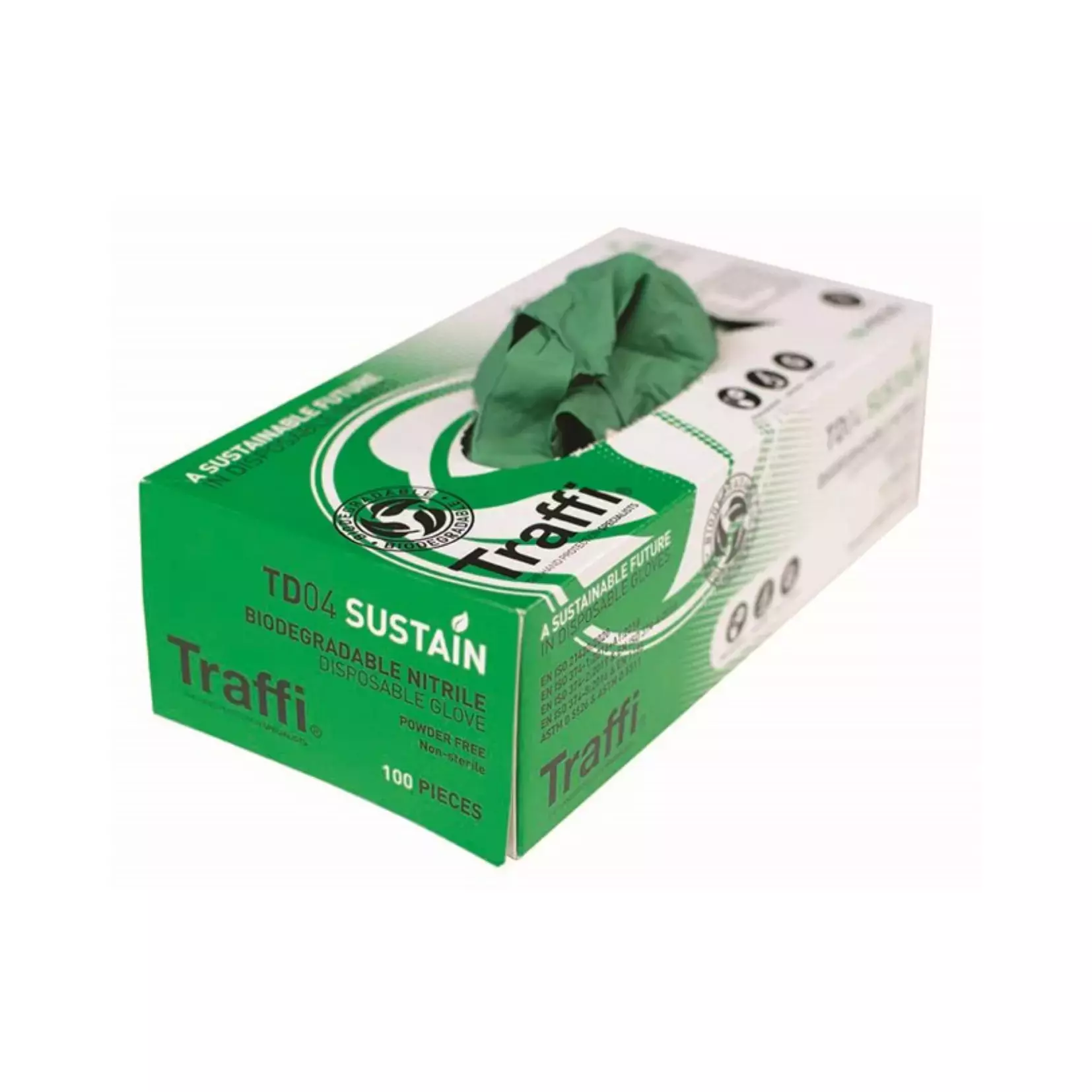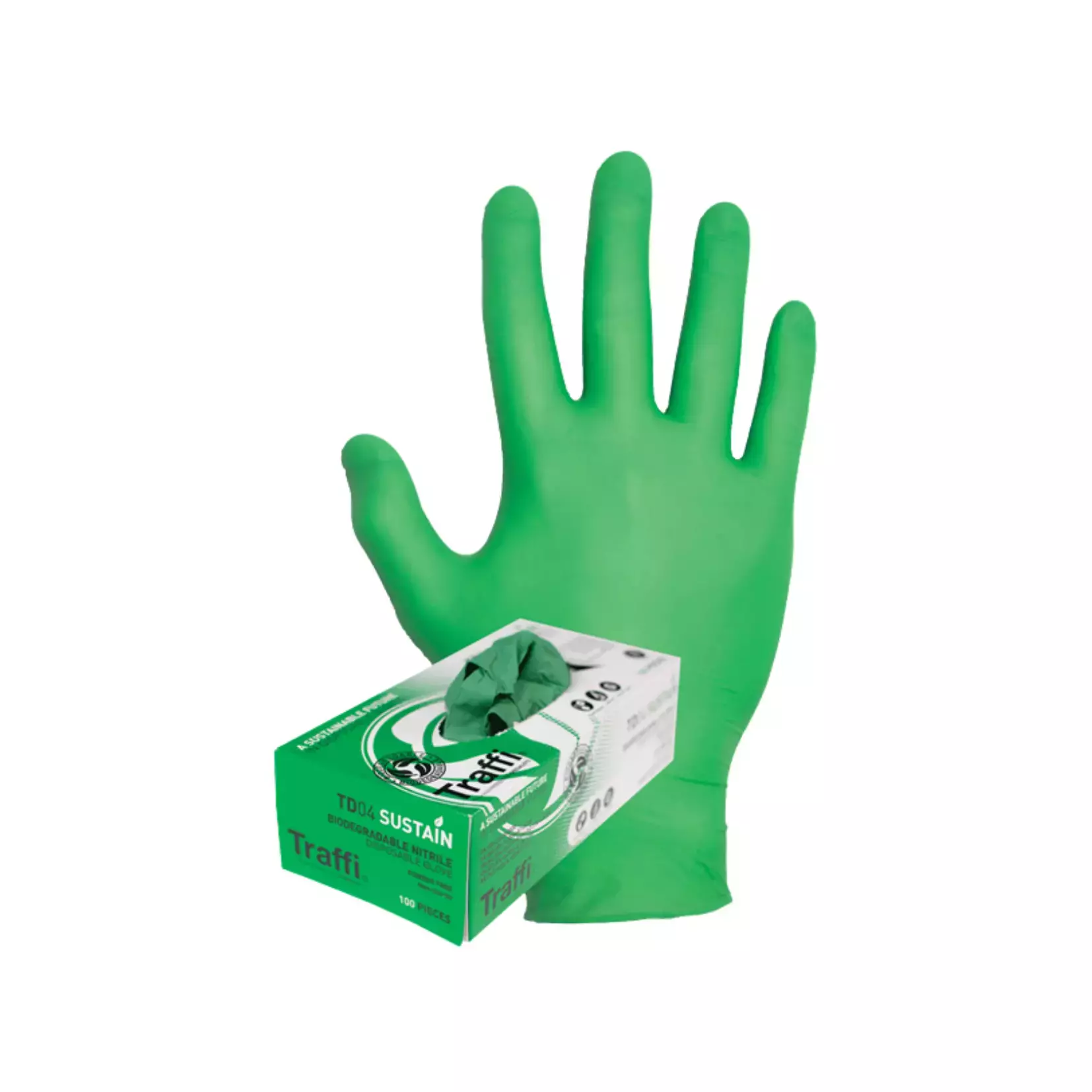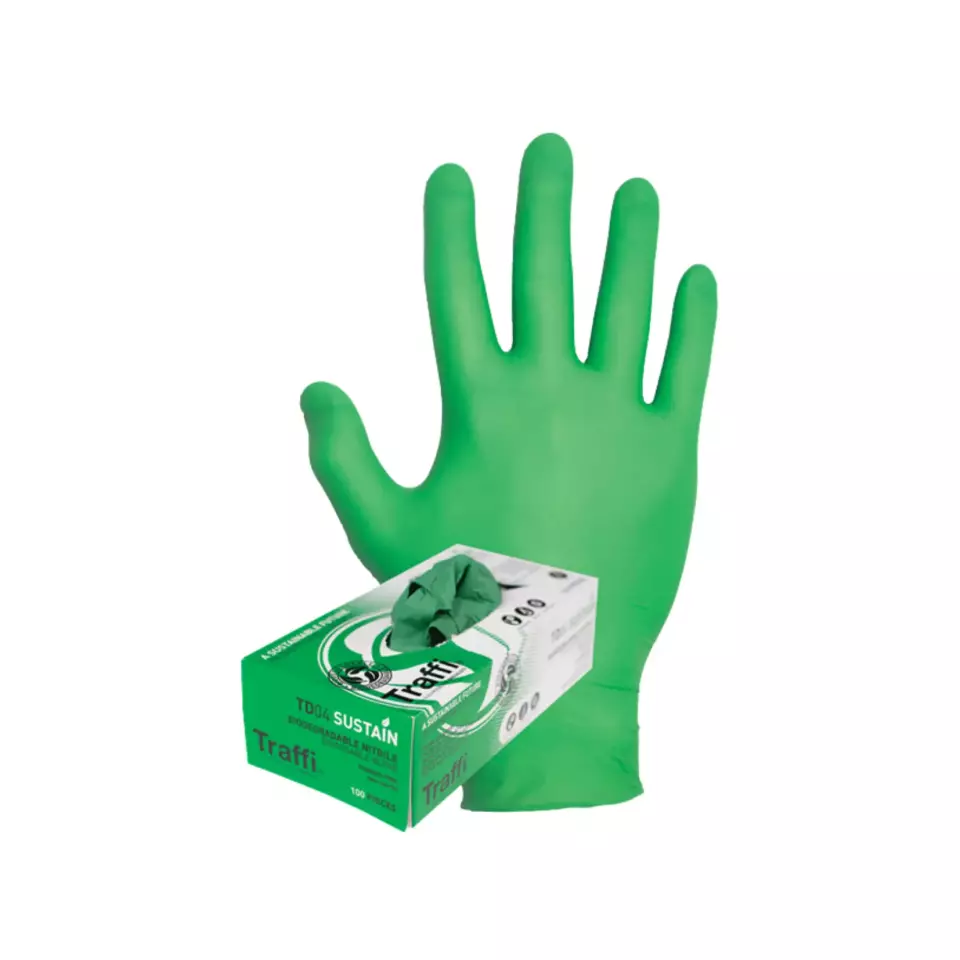


Features You'll Love

Finger Thickness · 0.16 mm
Measures the material thickness at the fingertips, affecting tactile sensitivity, dexterity, and protection level during use.

Cuff Style · Rolled
The design of the wrist opening, affecting ease of putting gloves on, comfort, and how securely they stay in place during use.
Traffi
Eco Nitrile Gloves, 10 x 100 pcs
Eco Nitrile Gloves, 10 x 100 pcs
(24)
89,61 €
Price per 10 packages (1 000 pcs)
8,96 € / 100 pcs
Free delivery
Features You'll Love

Finger Thickness · 0.16 mm
Measures the material thickness at the fingertips, affecting tactile sensitivity, dexterity, and protection level during use.

Cuff Style · Rolled
The design of the wrist opening, affecting ease of putting gloves on, comfort, and how securely they stay in place during use.
Product description
Traffi TD04 Sustain nitriilikäsineet 100 kappaleen rasioissa.
Kestävä vihreä nitriilikäsine, jonka hiilijalanjälki on merkittävästi normaalia nitriilikäsinettä pienempi. Käsine on myös luokiteltu biohajoavaksi: 79 % käsineen materiaalista biohajoaa 735 päivässä testin ASTM D5526 mukaan.
Käsine soveltuu käytettäväksi esimerkiksi elintarviketeollisuuteen, hoiva-alalle tai ravintoloihin.